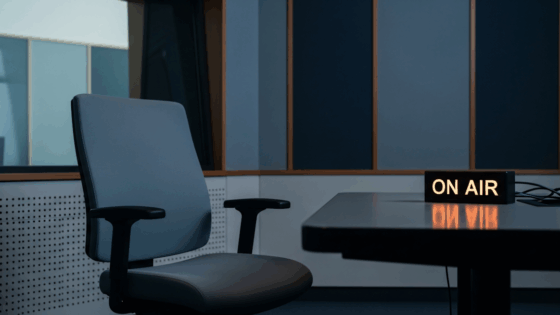on
BY SIMONE J. SMITH
“It’s the mother’s cries I will never get out of my head. Two children, whose bodies had been so pulverized by the bullets fired at them, decapitated, whose flesh had been so ripped apart. The only clue to their identities was the blood spattered cartoon clothes still clinging to them, clinging for life and finding none.”
Surgeon Dr Guerrero gave this statement speaking on the horrors he witnessed in an emergency room, describing these disturbing, and graphic images.
I know that many of you might not want to hear about this topic at this time of year, because the holidays are supposed to be about joy and cheer, families and get-togethers, but what about those families who have a loved one missing. In some cases, there is more than one missing. Have you ever questioned what the holidays are like for them? How do they navigate the loss they feel when they look at an empty place setting once held by a loved one?
More than 2,500 children and teenagers in the U.S. have been either injured or killed by gunfire so far in 2022, according to the Gun Violence Archive (GVA).
An update was provided on the number of Americans impacted by gun violence ahead of the House Committee on Oversight and Reform assembly on the national gun violence crisis. The GVA said the numbers it shared on social media were updated as of June 7th, 2022.
Nearly 1,800 children and teens have been injured by gunfire since the start of 2022, and 717 children and teens have been killed by gunfire in that time, according to the GVA.
Africans living in the United States bear the brunt of the gun violence epidemic, and although this might be common knowledge, I want you to take a look at some statistics, and really become cognizant of the trauma that we are dealing with in the African diaspora:
- Each day on average, 30 African Americans are killed by guns and more than 110 experience non-fatal injuries
- African Americans experience 10 times the gun homicides of White Americans
- African Americans are nearly three times more likely to be shot and killed by police as White Americans
- African Americans experience 18 times the gun assault injuries of White Americans
- 68% of African Americans or someone they care for has experienced gun violence
Why? Why are we continuing to witness these numbers in our communities across North America? This disparity is the result of centuries of oppression and disinvestment. Gun homicides, assaults, and police shootings all occur at a disproportionate rate in historically underfunded communities. It can be said that this underfunding is the result of past racist policymaking and perpetuates long-standing racial inequities.
Disproportionate rates of gun violence have also been exploited by gun lobbyist who have pushed dangerous myths to spread fear and to advance a pro-gun agenda rather than invest in proven solutions like community violence intervention and victim support.
What brought the seriousness of this topic to my awareness was a post that I saw on the Zero Gun Violence Movement Instagram page. We hear, and see the violence in America, and what we don’t realize is that this has slowly begun to leak across the border.
On May 17th, 2022, the Angus Reid Institute polled about 5,000 Canadians and found that overall 43% believed gun violence is increasing in the areas that they live.
51% said gun violence is the same, while 6% believed it was decreasing.
Overall, three-in-five (60%) say gun violence was rising in their province, with Quebecers (75%) and Ontarians (66%) perceiving this to be the case.
Further, two-in-five (43%) said that gun violence had increased in their communities. Those in urban areas were considerably more likely to say this (46%) when compared with Canadians living in rural parts of the country (29%). Residents in Montreal (65%), Halifax (56%), and Toronto (54% in 416 area code, 57% in 905 area code) were most likely to note that their communities had become more violent. Official data from Statistics Canada confirmed that firearm offences have, indeed, become more common over the past decade.
I had a chance to speak with Uncle Louis, the founder of the Zero Gun Violence Movement. He has been a community worker and advocate in the African Canadian community for over 30 years. His work has primarily focused on youth engagement and mentorship initiatives, and has been a part of successfully collaborating with over 40 different community organizations, agencies and programs across the city of Toronto.
The movement focuses on:
Education and Awareness
They provide youth with resources, support and information to help end gun violence within their community.
Advocacy
By providing youth and community leaders with the skills to: mobilize and encourage others to take action and create safe and healthy communities.
Engagement
By working with community members and organizations to help them develop the skills and tools to help reduce gun violence.
When I saw some of the most recent numbers, I had to reach out to Uncle Louis to find out exactly what he was witnessing. Why such a steep upward slope?
“These numbers are not a surprise for me,” Uncle Louis began. “For the last nine years, these numbers have been trending up. I have been appealing to the Black organization to take this topic on, but it was not part of their mandates. If it does not affect certain people, they do not care.
We finally got the JCA, and the Black Alliance to take this topic on last year. We need more community organizations to take this on seriously. These young people were not born with guns in their hands, and we as the village have to find ways to work with our young people, because unfortunately, our government continues to drop the ball.
Ford took 25 million dollars away from youth programming and gave the money to the police. He believed in more boots on the ground, and the police spoke out and said we need the community to partner with us.
Uncle Louis shared with me just how impactful this move by the government was.
“A young person who is currently on house arrest spoke to me and told me that if there were programs catering to young people, he probably would not have gotten himself in trouble.
Something that I noticed was the numbers started increasing when John Tory became the Mayor of Toronto. He kept saying it was a policing problem, even though the police were telling him that it is more than a policing issue. There is most definitely a correlation between the rise and violence and when Mayor Tory took power. The city of Toronto has been given money, but the money that has been delegated to community initiatives has decreased. You can see where their priorities are.
It was only when their safe zones had been breached, that they were taking notice. As long as it is in certain areas, they can’t be bothered.
Gun violence has become normalized in many communities. It has become tolerated. Toronto has become a city of cities. Quality of life depends on the colour of your skin and your postal code.
Our community needs to step up and start protecting our young people. In certain neighbourhoods in the city, people are running inside; there is no vibrancy, no energy, and no positive vibes. At sunset in certain areas things just shut down.
Gun violence does not happen in a vacuum, there is certain condition that breeds it. This time of the year is horrific for families who have lost their children to gun violence, and who are doing anything about it.
We have to shift back to what makes us who we are. It is about caring, and supporting families who live in the areas. It is time to return the mind-set of, it takes a village!”
Stay in the loop with exclusive news, stories, and insights—delivered straight to your inbox. No fluff, just real content that matters. Sign up today!
We, as humans are guaranteed certain things in life: stressors, taxes, bills and death are the first thoughts that pop to mind. It is not uncommon that many people find a hard time dealing with these daily life stressors, and at times will find themselves losing control over their lives. Simone Jennifer Smith’s great passion is using the gifts that have been given to her, to help educate her clients on how to live meaningful lives. The Hear to Help Team consists of powerfully motivated individuals, who like Simone, see that there is a need in this world; a need for real connection. As the founder and Director of Hear 2 Help, Simone leads a team that goes out into the community day to day, servicing families with their educational, legal and mental health needs.Her dedication shows in her Toronto Caribbean newspaper articles, and in her role as a host on the TCN TV Network.













